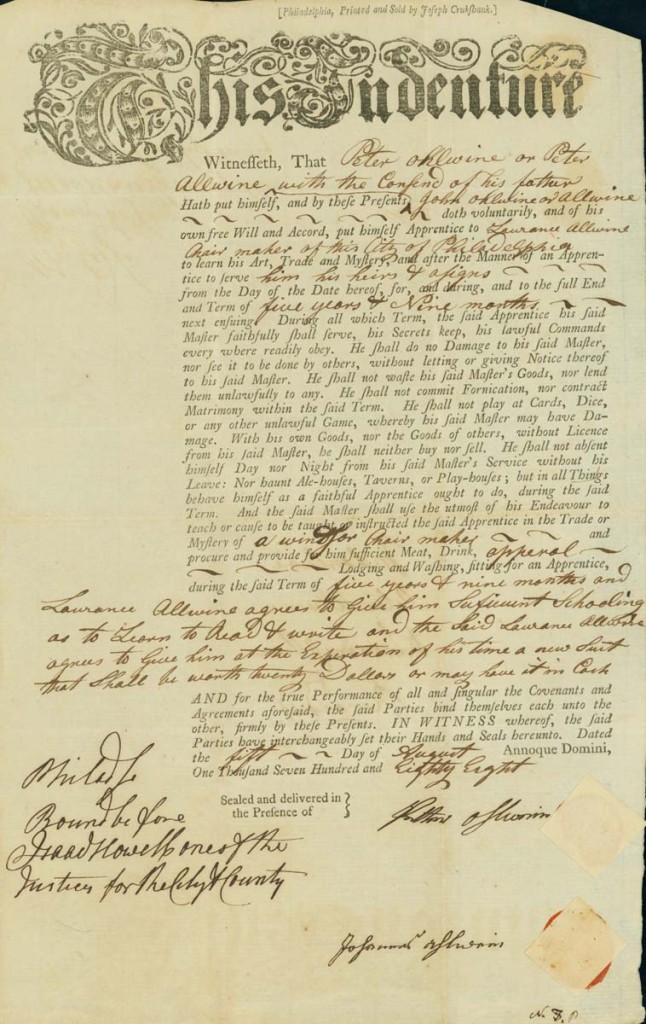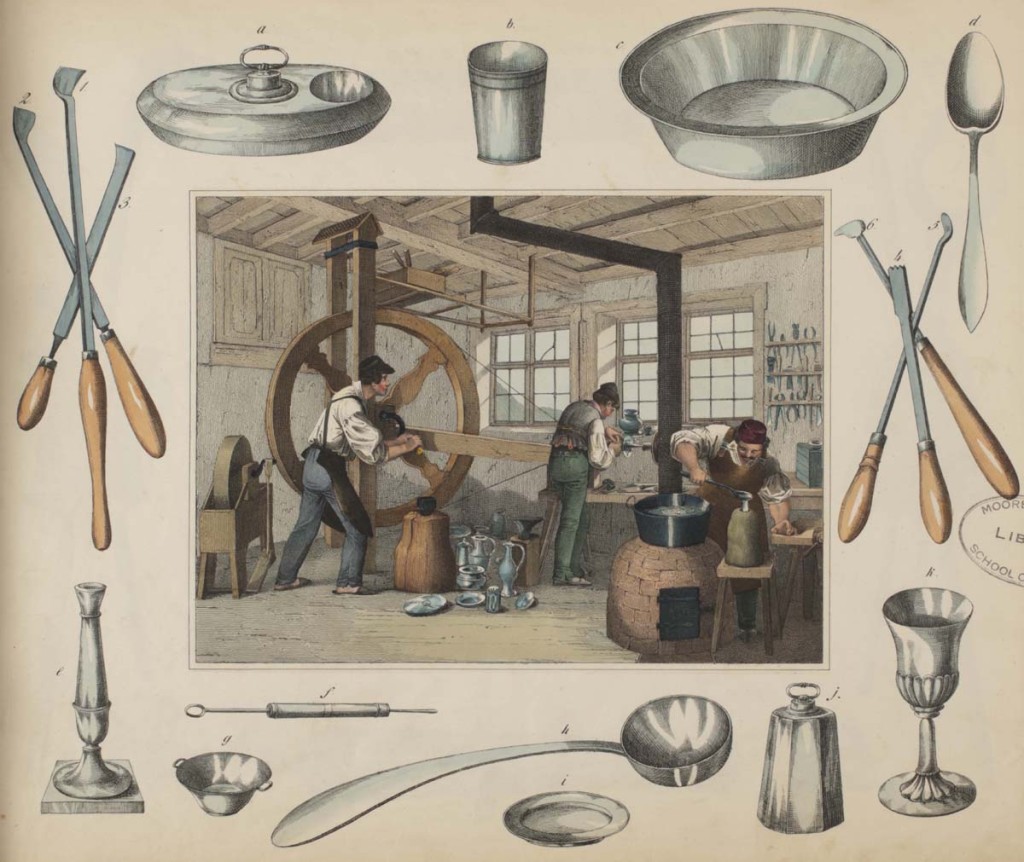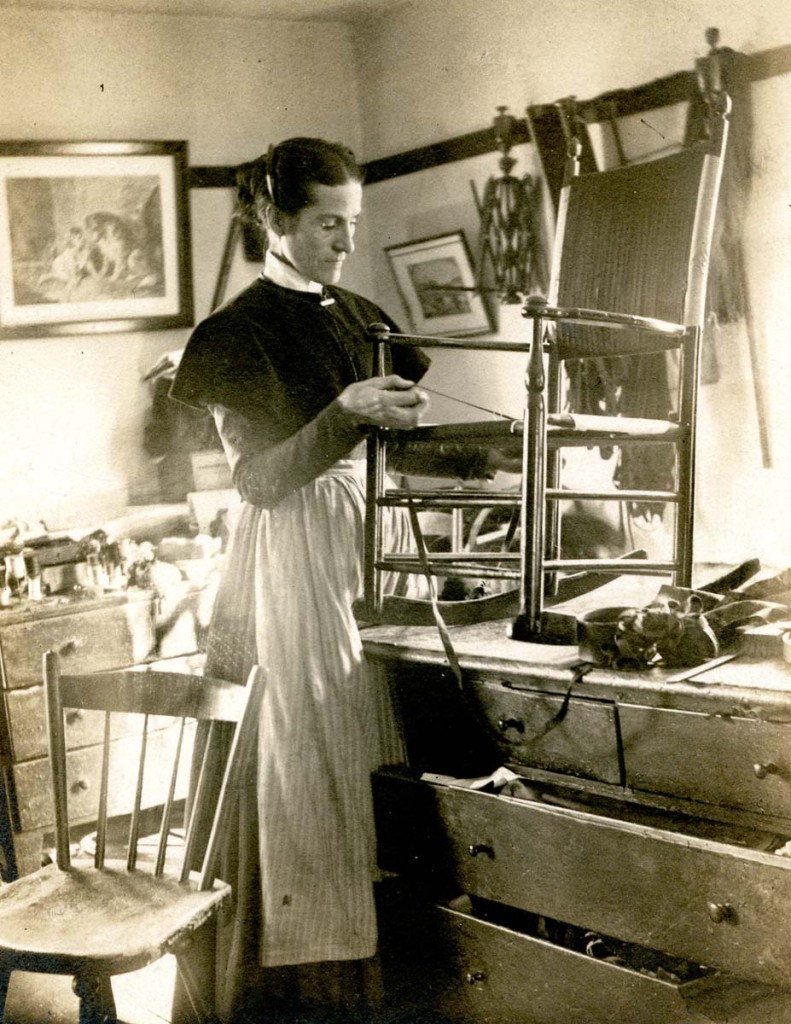Artisans and the Shop Tradition
Young boys learned mechanical skills as apprentices, working under master craftsmen. However, apprentices also applied their own creativity in the fashioning and decorating of objects. Views of actual workshops can help us to understand the process of designing and making objects.
Indenture of Peter Allwine
Philadelphia, Pennsylvania; 1788
Iron gall ink on paper
61×9.1 Downs Collection
This indenture is the legal document establishing the apprenticeship of young Peter Allwine to his uncle, Laurance Allwine, to “learn his Art, Trade and Mystery” of making Windsor chairs—for a period of five years and nine months.
30 Werkstätten von Handwerkern: Hebst Ihren Hauptlächlichsten werkzeugen und Fabrikaten
By Johann Ferdinand Schreiber, published by the author
Esslingen am Neckar, Germany; 18–
Hand-colored engraving
T45 S37 F Printed Book and Periodical Collection, gift of the Friends of Winterthur
This plate showing a pewterer’s workshop has a decorative border filled with the craftsman’s tools and products. The detailed scenes in 30 Werkstätten von Handwerkern (30 Workshops of Craftsmen)illustrate rarely seen interiors of shops from the 1800s.
Sister Sarah Collins
New Lebanon, New York; July 1912
Silver gelatin print
SA24.1 Edward Deming Andrews Memorial Shaker Collection, gift of Faith Andrews
Armchair
Made by the Shaker community
New Lebanon, New York; 1870–1910
Birch, maple
1967.1686 Gift of Mrs. A. Duer Irving
In the photograph, Sister Sarah Collins is seen weaving a cloth-tape seat similar to the one on this armchair. Sister Sarah was the last Shaker participant in the once-thriving chair industry at the New Lebanon community. The Shakers were a religious order that lived in communities separate from society. They produced a variety of goods to generate revenue to support their members.
Related Themes:




